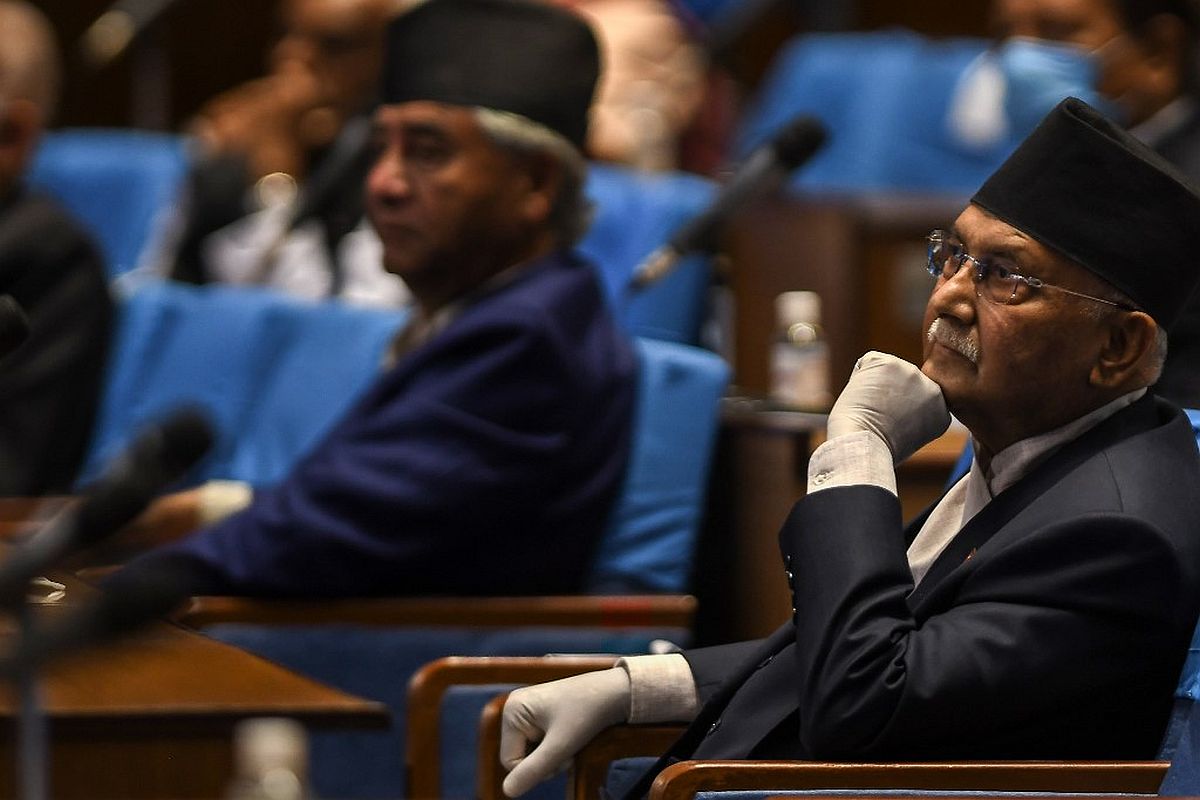Bangladeshi man in BSF net after visa issues
The BSF officials have come to know after they got Malaysian currency Ringgit from the possession of an apprehended Bangladeshi national
In its new map, Nepal claims the regions of Limpiyadhura in the West and also Kalapani and Lipulekh.

Nepal's Prime minister KP Sharma Oli. (Photo by PRAKASH MATHEMA / AFP)
Nepal parliament is set to update the new sketch of their map which includes a stretch of land high in the mountains that India claims as its own. The ruling Left alliance has moved a constitution amendment Bill on Saturday in this favour.
In its new map, Nepal claims the regions of Limpiyadhura in the West and also Kalapani and Lipulekh. This unilateral step from the neighbouring country has gained criticism from India.
Meanwhile, the opposition Nepali Congress has said that it would vote in favour of the amendment which means that the requirement of the two-third majority will be fulfilled and the bill would be passed comfortably.
Advertisement
In a surprising move for India by Nepal earlier this month, the mountaneous country had released a new map claiming the Indian regions as its own. These three regions are Limpiyadhura, Lipulekh and Kapalani.
It cited the Treaty of Sugauli in which the East India Company had demarcated the border between India and Nepal. According to the treaty, the eastern side of the river Kali is Nepal’s territory while the western is India’s.
But the controversy revolves around the interpretation of the treaty. Nepal takes Limpiyadhura as the origin of river Kali and claims Limpiyadhura, Lipulekh and Kalapani as its region.
Whereas, India says that the origin of river Kali is Kalapani (Kali name coming from Kalapani).
“Such artificial enlargement of territorial claims will not be accepted by India,” Anurag Srivastava, spokesperson for the Foreign Ministry, had said.
“Nepal is well aware of India’s consistent position on this matter and we urge the Government of Nepal to refrain from such unjustified cartographic assertion and respect India’s sovereignty and territorial integrity,” he had added.
Another interesting point to be noted here is that the Nepal’s claim came soon after the Border Road Organisation (BRO) constructed a road till Lipulekh pass, cutting down the travel time to Kailash Mansarovar by one week.
This region is very significant for India from security point of view as well, because it is bordering China with which India does not share a peaceful history.
It is not only the border or the land dispute which is triggering Nepal against India. It had also blamed India for the spread of coronavirus as its Prime Minister had said that the Indian virus looks more lethal than Chinese and Italian now.
“It has become very difficult to contain COVID-19 due to the flow of people from outside. Indian virus looks more lethal than Chinese and Italian now,” Nepal Prime Minister KP Sharma Oli had said.
“Those who are coming from India through illegal channels are spreading the virus in the country and some local representatives and party leaders are responsible for bringing in people from India without proper testing,” he added.
Advertisement